Triplin: Mechanistic Basis for Voltage Gating
- PMID: 37511231
- PMCID: PMC10380799
- DOI: 10.3390/ijms241411473
Triplin: Mechanistic Basis for Voltage Gating
Abstract
The outer membrane of Gram-negative bacteria contains a variety of pore-forming structures collectively referred to as porins. Some of these are voltage dependent, but weakly so, closing at high voltages. Triplin, a novel bacterial pore-former, is a three-pore structure, highly voltage dependent, with a complex gating process. The three pores close sequentially: pore 1 at positive potentials, 2 at negative and 3 at positive. A positive domain containing 14 positive charges (the voltage sensor) translocates through the membrane during the closing process, and the translocation is proposed to take place by the domain entering the pore and thus blocking it, resulting in the closed conformation. This mechanism of pore closure is supported by kinetic measurements that show that in the closing process the voltage sensor travels through most of the transmembrane voltage before reaching the energy barrier. Voltage-dependent blockage of the pores by polyarginine, but not by a 500-fold higher concentrations of polylysine, is consistent with the model of pore closure, with the sensor consisting mainly of arginine residues, and with the presence, in each pore, of a complementary surface that serves as a binding site for the sensor.
Keywords: cooperativity; kinetics; polyarginine; pore; porin; prokaryote; voltage dependence; voltage sensor.
Conflict of interest statement
The authors declare no conflict of interest.
Figures


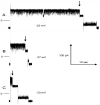
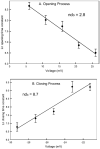
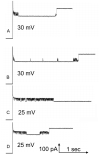

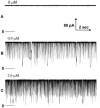

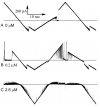

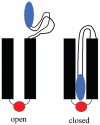
References
MeSH terms
Substances
LinkOut - more resources
Full Text Sources

